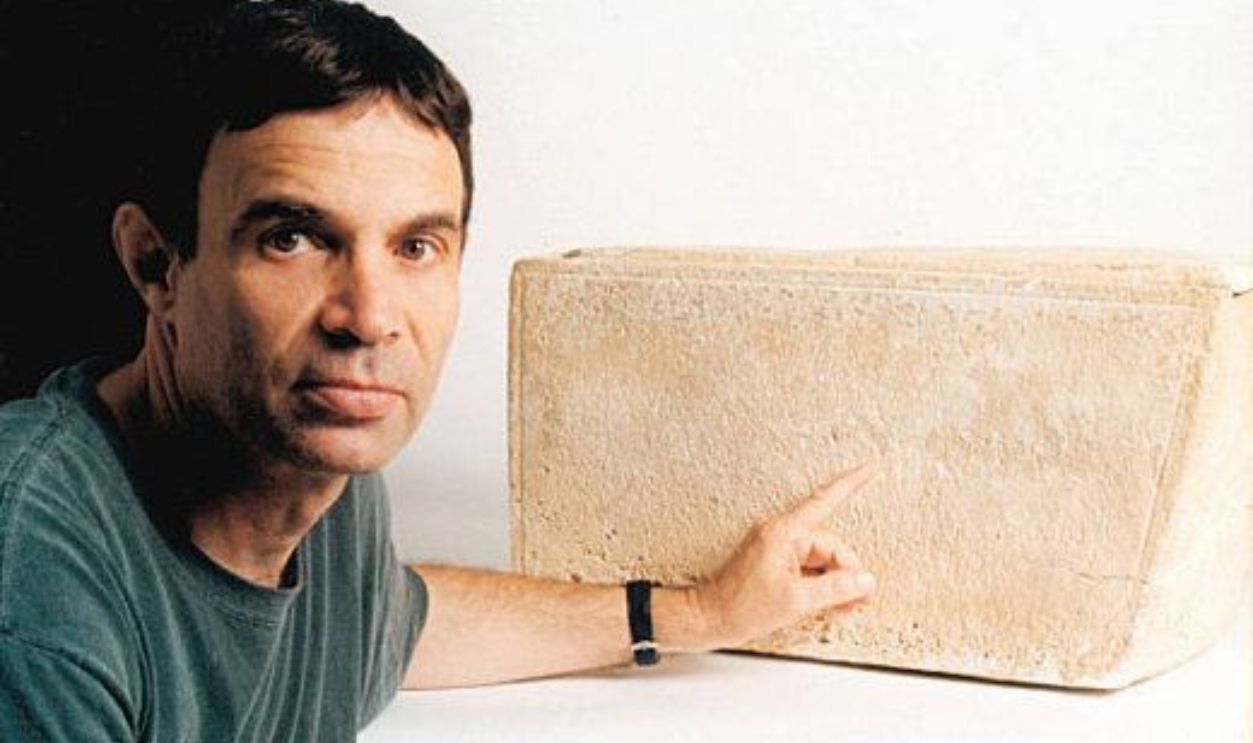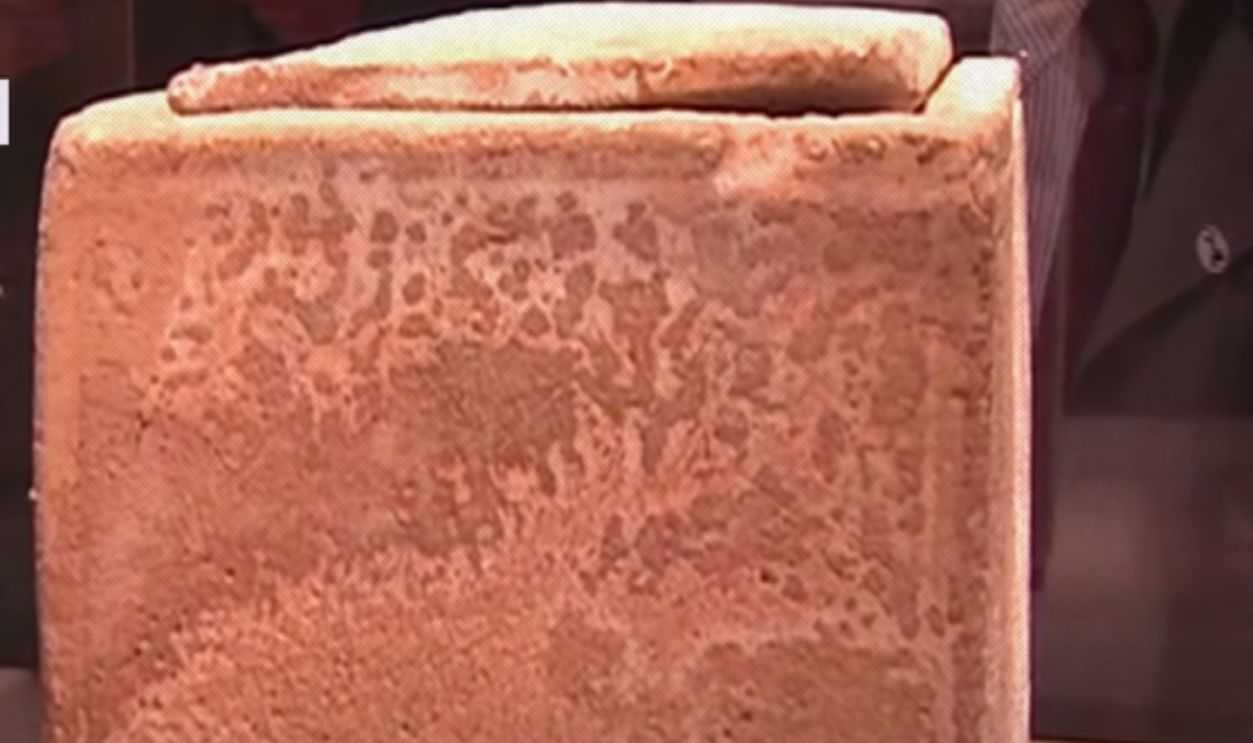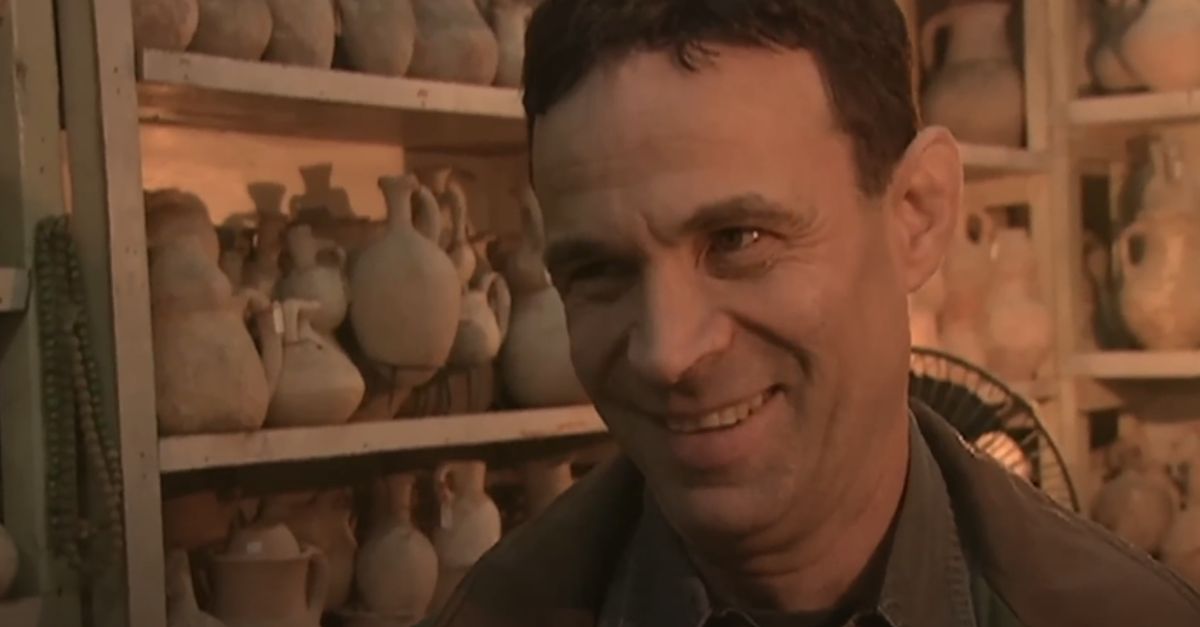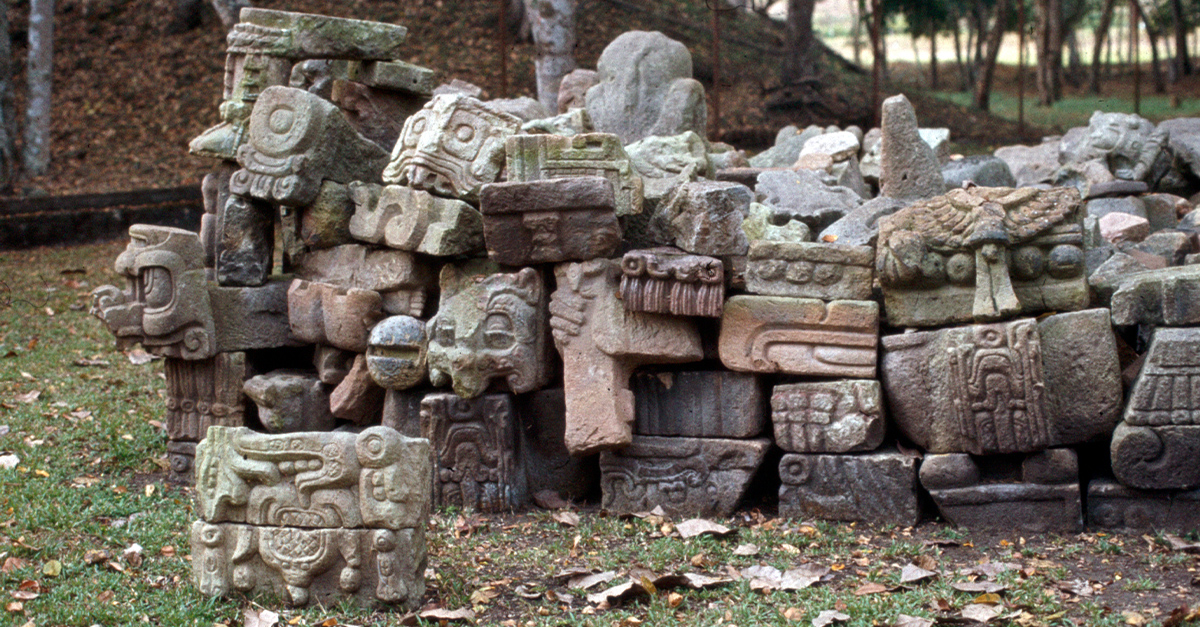Chemical Clues And Ancient Inscriptions To Authenticate The James Ossuary
Discovering ossuaries always sheds light on an ancient Jewish practice. But an unbelievable inscription left everyone questioning if they need to reconsider what they think they know about the most influential figure in Christianity.

More Than An Interesting Discovery
Ossuaries serve as the final resting place of skeletal remains. But one particular ossuary blew everyone’s mind when it was discovered in 1976. Its modest limestone construction belittles its monumental historical significance because of the etched inscription, written in ancient Aramaic—the common language of the region during that period.
Linked To A Key Christian Figure
The inscription immediately raised question marks over its authenticity, as it referred to “James, son of Joseph, brother of Jesus”. Many speculated that the box might have held the remains of James the Just, the leader of the Jerusalem church following the crucifixion of Jesus.
 Unknown Author, Wikimedia Commons
Unknown Author, Wikimedia Commons
Shedding Light On The Most Prominent Christian Family
As an old physical evidence tied to Jesus, it represents a meeting point between the crossroads of archaeology and religion. Moreover, the chest is a subject of scholarly intrigue and public fascination. If authenticated, the ossuary will deepen our understanding of early Christian history.
Ossuaries In Biblical Times
Ossuaries played an important role in the burial customs of Jewish communities during the late Second Temple period. These bone boxes carried deep symbolic meaning, often inscribed with names and religious phrases that reflected the identity and lineage of the person.
 Chamberi, CC BY-SA 3.0, Wikimedia Commons
Chamberi, CC BY-SA 3.0, Wikimedia Commons
The Story Of The Discovery
This ossuary was found in the Silwan area near the Temple Mount. Just like other ossuaries that aren’t found by archaeologists, the bones were immediately discarded. This leaves out an important piece of evidence that could have helped shed light on its authenticity.
 AVRAM GRAICER, CC BY-SA 3.0, Wikimedia Commons
AVRAM GRAICER, CC BY-SA 3.0, Wikimedia Commons
Some Archaeological Context
While early practices relied on cave burials, ossuaries offered a solution to limited burial space and religious prescriptions concerning cleanliness and ritual purity. Excavations of tombs in the region have revealed cave burials and ossuary collections, which provide a comprehensive picture of how they honored their dead.
 Tamarah, CC BY-SA 3.0, Wikimedia Commons
Tamarah, CC BY-SA 3.0, Wikimedia Commons
Just A Simple Box
Ossuaries often reflected the family of the deceased, so it wasn’t uncommon to have some decorations or words written. This particular one was made of limestone and 19.9 in × 9.8 in × 12.0 in and carried a phrase that would intrigue scientists for generations.
With A Profound Inscription
A scholar from Tel Aviv University highlighted that this is one of two of thousands of ossuaries found that includes a reference to a sibling. It wasn’t a usual practice at the time, which means that this piece of information probably carried a big significance.
 deror_avi, CC BY-SA 3.0, Wikimedia Commons
deror_avi, CC BY-SA 3.0, Wikimedia Commons
As A Historical Artifact
Dating back to almost 2,000 years ago, the 1970s discovery emerged when archaeological finds were beginning to piece together the sparse material evidence from the era of the Second Temple. It added tangible context to the narratives found in historical texts like the New Testament.
With A Remarkable Religious Background
The ancient Aramaic phrase engraved on the box has spurred debates over whether the ossuary could have held the remains of James the Just. However, controversies continue regarding its authenticity, as some experts have questioned whether the phrase “brother of Jesus” might have been added at a later date.
 Unknown Author, Wikimedia Commons
Unknown Author, Wikimedia Commons
Jewish Burial Customs In The First Century AD
So, beyond being linked to Jesus, what does this ossuary represent? Jewish customs during the Second Temple period were deeply influenced by religious traditions. After initial interment in family tombs or caves, skeletal remains were collected and stored in ossuaries—a practice rooted in beliefs about bodily purity and resurrection.
 Owenglyndur, CC BY 4.0, Wikimedia Commons
Owenglyndur, CC BY 4.0, Wikimedia Commons
And An Interesting Study
In 2012, Professor Camil Fuchs published a statistical study that showed that only 1.71 people were expected to be living at that time who would carry the name of James, have a father called Joseph, and a brother called Jesus. However, this needed further confirmation.
 WikiLester, CC BY-SA 4.0, Wikimedia Commons
WikiLester, CC BY-SA 4.0, Wikimedia Commons
The Role of James The Just
James the Just is often cited as a central figure among his siblings. According to several texts, including the New Testament and writings by early Church historians like Eusebius, James was a respected leader of the Jerusalem church following the crucifixion of Jesus.
 Unknown Author, Wikimedia Commons
Unknown Author, Wikimedia Commons
And His Religious Importance
Referring to him as “the Just” highlights the reputation he garnered for adherence to Jewish law. Thus, it resonates deeply with the historical accounts that portray him as not only a biological relative of Jesus but also a prominent authority in the formative years of the Christian movement.
 Unknown Author, Wikimedia Commons
Unknown Author, Wikimedia Commons
Public Unveiling And Global Reaction
In 2002, the James Ossuary was revealed to the public in a conference organized by the Discovery Channel and the Biblical Archaeology Society. Immediately, intense debate started among scholars, theologians, archaeologists, and the general public worldwide as they questioned its authenticity.
 JAMES, BROTHER OF JESUS - The James Ossuary Discovery by ActsNewsNetwork
JAMES, BROTHER OF JESUS - The James Ossuary Discovery by ActsNewsNetwork
Is It The Oldest Physical Evidence Of Jesus?
Scholars and enthusiasts agreed that if authenticated, the James Ossuary could represent the oldest physical evidence directly linked to Jesus. According to the Biblical Archaeology Society, this could fundamentally alter our understanding of the material culture surrounding Jesus' family in the 1st century AD.
 Biblical Archaeology Review | Recommended Resource by Walking The Text
Biblical Archaeology Review | Recommended Resource by Walking The Text
Controversy Emerges
André Lemaire, a Semitic epigrapher, translated the text and verified that it’s linked to Jesus in the 2002 issue of the Biblical Archaeology Review. Nevertheless, some scholars suggested that the phrase “brother of Jesus” might have been added by the artifact's owner to enhance its historical significance.
 Burdigo, CC BY-SA 4.0, Wikimedia Commons
Burdigo, CC BY-SA 4.0, Wikimedia Commons
Oded Golan And The 2003 Forgery Charges
At the center of the controversy was Oded Golan, the Israeli antiquities collector who owned the James Ossuary and faced forgery charges in 2003. Golan was accused of having altered the inscription, which led to a famous legal battle lasting over a decade.
 Into the Land: The Forgery Scandal by The Times of Israel
Into the Land: The Forgery Scandal by The Times of Israel
And A Long Battle
Despite the initial charges by the Israel Antiquities Authority, Golan was eventually acquitted of 44 charges of forgery and fraud after a ten-year trial. However, the court’s verdict highlighted that the acquittal did not confirm the inscription’s authenticity or its 2,000-year-old origins.
Judicial Commentary On Authenticity And Antiquity
During the trial, the judge made a clear distinction between an acquittal and a scholarly validation of the artifact’s authenticity. He also highlighted that the absence of criminal conviction does not necessarily confirm the inscription’s age or origin, which highlights the challenges in settling historical debates.
 Into the Land: The Forgery Scandal by The Times of Israel
Into the Land: The Forgery Scandal by The Times of Israel
Acquittal And Its Implications For The Artifact
The verdict and acquittal brought relief to some but left many questions unanswered. The judicial decision clarified that being cleared of forgery charges did not equate to an endorsement of the artifact's historical credentials. As a result, the debate was kept alive in scholarly circles.
 Into the Land: The Forgery Scandal by The Times of Israel
Into the Land: The Forgery Scandal by The Times of Israel
Assessing The Inscription’s Authenticity
To address the allegations of forgery, experts conducted a series of chemical tests on the ossuary, particularly on the inscription. These tests aimed to analyze the patina and composition that could indicate whether the inscription was indeed created in antiquity or added in more modern times.
With A Curious Eye
According to the Bible Archaeology Report, the first part of the inscription was written in formal script. However, the second part, which states that it belongs to the brother of Jesus, is written in cursive. As a result, this could suggest that this phrase was written by another person.
 Into the Land: The Forgery Scandal by The Times of Israel
Into the Land: The Forgery Scandal by The Times of Israel
And Confusing Results
In 2005, Wolfgang E. Krumbein published an external report that claimed that the patina on the box and the weathering on the script match. He explained that modern scientific methods could help evaluate ancient inscriptions to determine whether the lettering was created during the artifact’s original period or applied later.
 Into the Land: The Forgery Scandal by The Times of Israel
Into the Land: The Forgery Scandal by The Times of Israel
A Theological Debate
Many theologians question whether the phrase "brother of Jesus" could have been a later addition, potentially challenging established narratives about Jesus' family as depicted in the New Testament. Scholars continue to analyze linguistic patterns and chemical signatures to resolve these issues.
 Into the Land: The Forgery Scandal by The Times of Israel
Into the Land: The Forgery Scandal by The Times of Israel
Mary’s Perpetual Virginity
Because of this discovery, many questions also arose surrounding Mary’s perpetual virginity, a belief held by many Christian traditions. Some argue that if the inscription is authentic, it may contradict the belief that Mary remained a virgin throughout her life, as it suggests that Jesus had a biological brother.
 Giovanni Battista Salvi da Sassoferrato, Wikimedia Commons
Giovanni Battista Salvi da Sassoferrato, Wikimedia Commons
And Questioning Biblical References
The New Testament mentions several siblings of Jesus, with names such as James, Jude, Simon, and Joses. These references raised questions about the nature of Jesus’ family relationships. While some interpretations suggest that these were literal brothers and sisters, others propose that they might have been step-siblings or close relatives.
 Anthony van Dyck, Wikimedia Commons
Anthony van Dyck, Wikimedia Commons
Early Church History And Family Dynamics
Early church history is full with accounts of complex family dynamics, particularly regarding the immediate relatives of Jesus and their evolving roles in the nascent Christian community. Historical sources illustrate how figures such as James the Just were key leaders in Jerusalem after the crucifixion.
 Benaki Museum, Wikimedia Commons
Benaki Museum, Wikimedia Commons
A Literal Brother?
In the Gospel of Mark (3:21), there’s an account that speaks of how Jesus’ family opposed his message and didn’t believe him. Could the script on the ossuary refer to someone who supported him and treated him like a brother? Despite not being biologically linked to him?
 Sargis Pitzak, Wikimedia Commons
Sargis Pitzak, Wikimedia Commons
Martyrdom Of James
Historical records suggest that James the Just was martyred. Some suggest that he was stoned in 62 AD on the orders of a high priest, while others claim that in 69 AD, he was thrown from the Temple and then clubbed by scribes and Pharisees.
The Role of High Priests And Pharisees
Regardless, these accounts show how the high priests and Pharisees were influential figures in Jewish society during the first century AD. Historical evidence strongly suggests they actively sought to suppress disruptive movements like Christianity by getting rid of influential figures.
 Gustave Doré, Wikimedia Commons
Gustave Doré, Wikimedia Commons
Anti-Christian Measures In The Post-Crucifixion Era
Following the crucifixion of Jesus, Jewish and Roman authorities tried to curb the spread of what was then considered a radical sect. These measures ranged from social ostracism and legal restrictions to direct violent persecution, which led to the demise of James.
Oded Golan’s Personal Narrative
As a young engineering student in Israel, Oded Golan purchased the ossuary without initially recognizing its profound significance. His journey from an unassuming collector to a central figure involved in one of the most contentious debates in Biblical archaeology highlights the complex interplay between historical artifacts and modern scholarly discourse.
 Into the Land: The Forgery Scandal by The Times of Israel
Into the Land: The Forgery Scandal by The Times of Israel
Of His Unknowing Purchase
What he thought to be a mindblowing discovery turned out to be the reason for a decade-long battle and 44 counts of forgery and fraud. This unintentional encounter with history shows how significant archaeological finds enter the market through chance and private collection rather than through formal excavations.
 Into the Land: The Forgery Scandal by The Times of Israel
Into the Land: The Forgery Scandal by The Times of Israel
Is It Linked To The Talpiot Tomb?
In 1980, the Talpiot Tomb was discovered in a suburb of Jerusalem. It contained several ossuaries bearing names that correspond to figures from the New Testament, including names associated with Jesus’ family. Did these artifacts and the James Ossuary originate from the same family burial site?
 Golf Bravo, CC BY-SA 3.0, Wikimedia Commons
Golf Bravo, CC BY-SA 3.0, Wikimedia Commons
The Talpiot Tomb Excavation
The findings from this tomb have provided critical data on the funerary customs and family structures of the era, which align with other archaeological evidence from the Second Temple period. Scholars have analyzed the inscriptions to assess the likelihood of these being linked to the family of Jesus.
 deror_avi, CC BY-SA 3.0, Wikimedia Commons
deror_avi, CC BY-SA 3.0, Wikimedia Commons
Chemical Analysis Of The James Ossuary
The Israel Geological Survey tested the ossuary using different methods and concluded that it has a patina that covers the limestone surface and inscription, consistent with being in a cave for centuries. However, the Israeli Antiquities Authority said that the inscription was made to look old using chalk solution.
 LGLouLGLou, CC BY-SA 4.0, Wikimedia Commons
LGLouLGLou, CC BY-SA 4.0, Wikimedia Commons
The First Apocalypse Of James
In 2017, a 1,600-year-old document known as the "First Apocalypse of James" spoke of Jesus' revelations about future events, including the foretold death of James. However, it refers to James as a relative of Jesus and clarifies that this relationship is not material and is symbolic or spiritual.
 WolfgangRieger, Wikimedia Commons
WolfgangRieger, Wikimedia Commons
And Its Forbidden Nature
However, the "First Apocalypse of James" is categorized among the heretical documents that were ultimately excluded from the canonical New Testament. The predictions and mystical insights diverged sharply from orthodox doctrines and thus were suppressed by early church authorities seeking to maintain a unified theological stance.
 University of Michigan, Wikimedia Commons
University of Michigan, Wikimedia Commons
An Alternative Christian Narrative
The Gnostic tradition represents an alternative branch of early Christianity that placed a strong emphasis on inner spiritual knowledge or gnosis over the literal interpretation of sacred texts. Gnostic writings, such as those found in the Nag Hammadi library, offer radically different accounts of Jesus’ teachings and relationships.
 Manuscritos en el tiempo, Wikimedia Commons
Manuscritos en el tiempo, Wikimedia Commons
And A Different POV
This tradition challenged the orthodox narratives by suggesting that salvation was attainable through knowledge rather than through the established religious hierarchy. The Gnostic Approach provided early Christians with a more mystical framework for understanding the divine and highlighted the diversity of thought in the formative years of Christianity.
 Unknown Author, Wikimedia Commons
Unknown Author, Wikimedia Commons
The Nag Hammadi Library
Discovered in 1945 near Nag Hammadi in Egypt, the Nag Hammadi library is a remarkable collection of 13 leather-bound codices that contain 52 early Christian and Gnostic texts. These manuscripts, written between the 2nd and 6th centuries AD, were later deemed heretical by orthodox authorities.
 Unknown Author, Wikimedia Commons
Unknown Author, Wikimedia Commons
And A Radical Perspective
‘The Nag Hammadi and other Gnostic texts offer radically different perspectives on Jesus and his family compared to orthodox Christian narratives. In Gnostic writings, familial relationships, including those involving figures like James, are often reinterpreted as symbolic expressions of spiritual kinship rather than literal blood ties.
 Unknown Author, Wikimedia Commons
Unknown Author, Wikimedia Commons
Impact Of The Ossuary
Although the “First Apocalypse of James” was rejected by the church, the James Ossuary challenges scholars to reconsider the approved narratives. As debates continue, the ossuary remains a catalyst for advancing methodological approaches and deepening our understanding of the historical Jesus and his family.
 Into the Land: The Forgery Scandal by The Times of Israel
Into the Land: The Forgery Scandal by The Times of Israel















